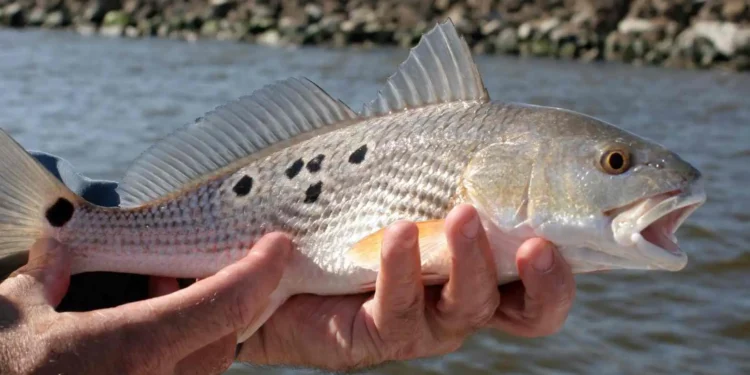Redfish, also known as red drum fish, are prized catches for anglers along the East Coast and into the Gulf of Mexico. These saltwater fish are known for their elusive behavior and robust fight when hooked. However, an intriguing question often arises: “Do redfish have teeth?” In this article, we will delve into the dental anatomy of redfish, uncovering the truth about their teeth.
Do Redfish Have Teeth?
Redfish do possess teeth, but they are not what you might expect. Unlike some saltwater fish’s sharp, predatory teeth, redfish boast bony structures known as pharyngeal teeth. These teeth are not visible when you first glance at a redfish, as they are located deep within the fish’s mouth, just beyond the last gill arch.
These pharyngeal teeth are uniquely adapted to the redfish’s diet, primarily consisting of crustaceans and shellfish like crabs, shrimp, oysters, and other creatures encased in hard shells. The shape of these teeth resembles human molars, designed to crush the tough shells of their prey. This specialized adaptation allows redfish to easily access the delicate flesh within these hard shells.
Variations in Redfish Teeth: Size Matters
Whether the redfish is large or small, the presence of these pharyngeal teeth remains consistent. However, larger redfish may surprise anglers with an additional set of teeth located closer to the front of their mouths. These front teeth are more akin to the typical sharp teeth found in predatory saltwater fish. They are individual, pointed teeth designed for gripping and holding onto prey.
These sharp teeth may not pose a risk to the angler when handling a redfish of smaller size. Still, with larger redfish, these teeth can be potentially hazardous. Many anglers have experienced the bite of these sharp, pointed teeth while handling redfish, resulting in unexpected injuries. It’s essential to exercise caution when interacting with these fish.
Are Redfish Teeth Sharp?
The pharyngeal teeth in a redfish’s mouth are not sharp. They are flat and specialized for crushing rather than tearing through flesh. However, their serrated edges can aid in breaking down the flesh of their prey after the initial shell crushing. These teeth are powerful but not intended to cause injuries to humans.
The front teeth found in larger redfish can be sharp and pointed, and they effectively gripped prey. Anglers must be mindful of these teeth, as they can inadvertently inflict harm if not handled correctly. The act of “lipping” a redfish, where the angler places their hand near the fish’s mouth to secure it, can result in bites from these sharp teeth.
Protecting Your Fishing Line
While redfish’s pharyngeal teeth may not be sharp enough to harm anglers, they can pose a risk to fishing lines. The flat crushing plates in their mouths can inadvertently damage a fishing line, especially if it is thin, such as a braided or mono leader. A few encounters with these crushing plates can lead to line breakage, potentially resulting in the loss of a hooked redfish.
To mitigate this risk, it is advisable to use a stronger leader line than your main fishing line when targeting redfish. This extra strength provides a buffer against the potential damage caused by the fish’s teeth. While incidents of line breakage due to redfish teeth are relatively rare, they do occur, as confirmed by research conducted on anglers.
Final Words: Do Redfish Have Teeth?
In summary, redfish have teeth but differ from the sharp, pointed teeth found in some predatory saltwater fish. Their pharyngeal teeth are specialized for crushing the shells of crustaceans and shellfish, making them exceptionally well-suited for their diet. Larger redfish may have sharp front teeth that can pose a risk to anglers if not handled properly.
Additionally, anglers should take precautions to protect their fishing lines when targeting redfish. Understanding the unique dental anatomy of redfish can enhance the fishing experience and ensure safe handling practices. So, the next time you catch a redfish, you’ll know that those seemingly unimposing teeth play a crucial role in their fascinating life in saltwater habitats.




